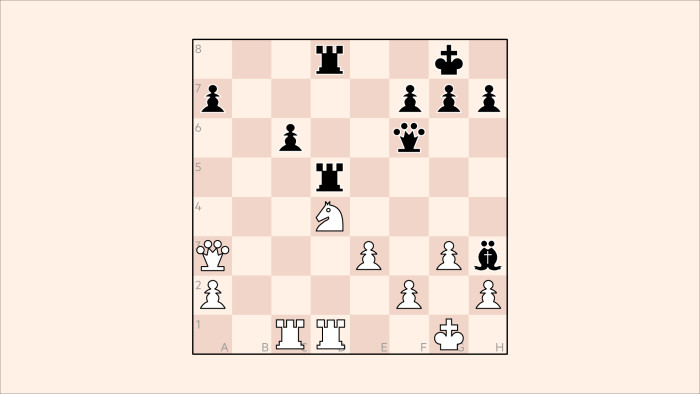Chess: Carlsen fails again in world blitz as tie-break rule controversy continues

Magnus Carlsen’s hopes of continuing to hold three world crowns simultaneously were dashed, first by the rules and then by his rivals, at Warsaw last week. The Norwegian legend was controversially excluded from the final tie-break match in the World Rapid (15-minute games), then slumped to twelfth place in the World Blitz (three-minute games).
The No1 suffered six defeats in 21 starts for his lowest finishing position ever in a dozen World Blitz attempts, which had included five gold medals, then said: “ Some days you just don’t have it. I was nowhere near close to the level I needed to be.”
His setback followed the controversial end to the World Rapid two days earlier, which ended in a four-way tie on 9.5/13 among Carlsen, his last two title challengers Fabiano Caruana and Ian Nepomniachtchi, and the fast improving 17-year-old from Uzbekistan, Nodirbek Abdusattorov.
Under Fide regulations only the two with the best tie-breaks from the main tournament could contest the play-off, thus excluding Caruana and an angry Carlsen, who denounced the rules as “idiotic. Either all players on the same amount of points join the play-off, or no one does”.
International Chess Federation (Fide) officials pointed out that some multiple ties in previous major events have involved as many as eight players, which, combined with potential long draw sequences in a play-off, could disrupt an already tight schedule. But Carlsen’s stance was supported by the blitz results, where France’s Maxime Vachier-Lagrave won the play-off against the local hero, Poland’s Jan-Krzysztof Duda, while the fan favourite and current world No 2, 18-year-old Alireza Firouzja, was excluded despite being on the same score total.
The current rules have been unchanged and tacitly accepted for more than four years. Ironically, a three-way tie in the 2017 World Rapid saw Nepomniachtchi left out of the play-off, but there were no complaints then.
Abdussattorov met and defeated the strongest opposition of all. He beat Carlsen and Caruana in the main event, and Nepomniachtchi in the play-off, while he also won against Levon Aronian and Boris Gelfand from the elite. The 10-minute video of his final victory is fascinating to watch. For FT viewers, can you spot the three successive moves near the end where the Uzbek misses mate in two? The answer is with this week’s puzzle solution.
Uzbekistan has long punched above its weight in world chess, starting with silver medals behind Russian gold in the 1992 Olympiad. In 2004, Rustam Kasimdzhanov won the Fide version of the world title, defeating England’s Michael Adams in the final. Now, in 2021, four teenage Uzbeks led by Abdusattorov performed well in the Fide Grand Swiss in Riga. One secret is to hothouse the very best talents for age, as the former USSR did in the 1930s and England, despite limited resources, did in the 1970s.
Covid-19 is a threat to all chess tournaments right now, and Warsaw, with nearly 250 competitors in the open and women’s events, had a narrow escape. On the final blitz day the five-time US champion and popular streamer Hikaru Nakamura had to withdraw along with two others. The round was delayed for an hour while the grandmasters queued in sub-zero temperatures for public tests, as private testing in the playing hall could not be arranged. There had been a similar narrow escape at the Riga Grand Swiss, but keeping the players and organisers in a single large bubble avoided disaster.
Next weekend the chess action moves to the “chess Wimbledon” at Tata Steel Wijk aan Zee in the Netherlands, where Carlsen will launch his declared campaign to achieve an all-time record rating of 2900 points. He is currently at 2865, with an official peak of 2882 and an unofficial daily high of 2889.
2451
Carlos Palermo v Predrag Todorcevic, Novi Sad 2017. Black to move and win. If you are experienced in tactics, this will look simple, but a sneaky trap awaits unwary solvers.
Click here for solution
Comments